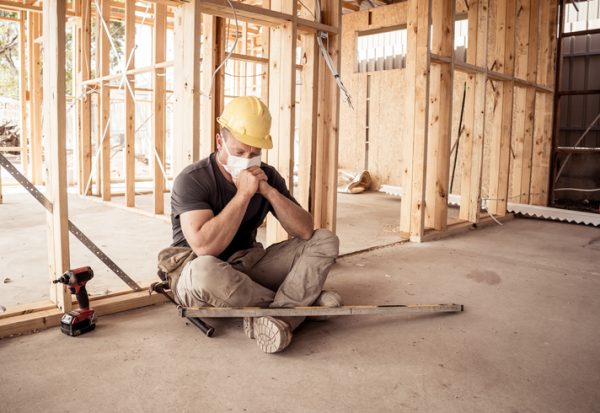How Might COVID-19 Affect Home Building?
Many industries are being heavily impacted by the coronavirus (COVID-19) pandemic. With the volatility we’ve seen in the stock market, labor market and economy overall, many people wonder whether the housing market will suffer similarly. Though the full impact of COVID-19 remains uncertain, the housing market has given us some clues about what to expect.
Builder sentiment is still high . . . for now
According to the National Association of Home Builders/Wells Fargo Housing Market Index, overall builder sentiment was strong in March. Although it dropped 2 points overall, it rested at 72, well within the positive range.
However, there is a catch. About half the builders responded prior to March 4. That was before the US government declared COVID-19 a national emergency and before the stock market crashed. Still, some builders have yet to see noticeably negative impacts from COVID-19.
For example, builders in Arizona report that sales have not fallen materially, nor have they seen interruptions in their supply chains. Although many of these builders have closed their sales offices, they’re still selling houses. Some of these builders have opted for virtual tours of their homes over physical open houses. Leveraging such technologies may help solve problems caused by social distancing.
Likewise, although larger cities have begun implementing stay-at-home orders, long-term projections aren’t so dire. For example, the California Association of Realtors cautiously predicts modest improvements in their housing market despite COVID-19’s effects thus far.
Most states still consider home building essential
Most builders in the United States won’t be forced by state or federal governments to suspend operations as a rule. In fact, as of now, only 6 states—Michigan, New Jersey, New York, Pennsylvania, Vermont and Washington—have deemed construction (specifically, home building) non-essential or have forced builders to suspend operations except in emergencies.
Some states have confusing orders, such as North Carolina, that make it unclear whether construction is essential. But for the most part, construction, including home building, is still an essential service to most states.
For consistent up-to-date information about any COVID-19 construction limitations, you can visit BuilderOnline.com’s state-by-state tracker.
April will likely bring more dire news
April will be the first true test of the effects COVID-19 has on home building. The volatility within the stock market in March may have created a feeling of uncertainty among buyers that could have them reconsidering a home purchase. As more businesses lay off employees to address shortfalls, buyers are going to be more hesitant to make purchasing decisions, especially ones as large as a home. Mortgage rates have fallen to historic lows, but the rush to refinance caused a spike. Though rates will most likely remain low for the near term, such volatility may cause buyers to stand pat.
Consumer confidence began to plummet in March, dropping nearly 12 points. And this is likely just the beginning. When consumer confidence is low, people are less likely to spend. Bigger-ticket purchases, like homes, will likely see a rapid slowdown throughout April and perhaps throughout the entire second quarter.
Travel bans and border closings may interrupt supply chains, which can have further negative impacts.
Long-term effects could be more positive
Low mortgage rates may allow more people to enter the home-buying arena. And prior to COVID-19, the housing market was extremely strong. These 2 factors could produce soaring results as governments and health professionals work to contain and eradicate the coronavirus.
Some economists still believe that the US economy will experience a V-shaped recovery, which is a huge crash followed by massive gains. This would bode well for builders, who came into 2020 riding strong tailwinds. Early results from China’s economic recovery, which is just now emerging from lockdowns, show strong gains.
Other economists believe the US recovery will be gradual, more of a Nike swoosh shape, as a result of people slowly getting back to normal. Looking again to China, though many of the cities that locked down have received the all clear to begin resuming life as normal, people are still hesitant. If the US mimics this reaction, the recovery may be more prolonged, though positive.
Perhaps the most promising long-term outlook, especially for builders, is the idea of pent-up demand. Basically, this means that once things start looking better in terms of the coronavirus battle, people will flood the market to spend on things they were forced to forgo. When you combine pent-up demand with the historic shortage of homes for sale and extremely low interest rates, you’re likely to see potential for strong growth.
Of course, until it’s clearer that the US is truly beating the virus back, it’s difficult to predict the outcomes. But most economists and prognosticators tend to agree that the long-term outlook isn’t as dire as the short term.
How 2-10 HBW is working with builders through COVID-19
2-10 Home Buyers Warranty (2-10 HBW) is the leading structural warranty provider for builders. Builders still expect us to protect their builds and their budgets. Here’s how we’re doing that.
- We are open for business and will work to help you minimize business interruptions during these rapidly changing circumstances.
- We are still addressing your questions, processing enrollments, handling service requests and addressing warranty claims.
- The team is available to answer calls, even as they work from home.
- Our online Builder Portal is always available. The Builder Portal is the fastest and most efficient way for you to process new enrollments, check the status of an enrollment, view warranty documentation, manage projects or download resources. Log in to your Builder Portal account at secure.2-10.com/BuilderOnlinePortal.
Though the next few months will likely be challenging for builders, there is hope on the horizon. 2-10 HBW will be there to support builders in these uncertain times.
Learn how you can protect your business and add valuable selling points to your new builds with a 2-10 HBW structural warranty.








